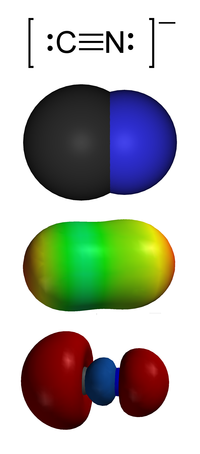
Photo from wikipedia
Ionic self-assembly of charged molecular building blocks relies on the interplay between long-range electrostatic forces and short-range, often cooperative, supramolecular interactions, yet has been seldom studied in two dimensions at… Click to show full abstract
Ionic self-assembly of charged molecular building blocks relies on the interplay between long-range electrostatic forces and short-range, often cooperative, supramolecular interactions, yet has been seldom studied in two dimensions at the solid-liquid interface. Here, we demonstrate anion-driven switching of two-dimensional (2D) crystal structure at the Au(111)/octanoic acid interface. Using scanning tunneling microscopy (STM), three organic salts with identical polyaromatic cation (PQPC6+ ) but different anions (perchlorate, anthraquinonedisulfonate, benzenesulfonate) are shown to form distinct, highly ordered self-assembled structures. Reversible switching of the supramolecular arrangement is demonstrated by in situ exchange of the anion on the pre-formed adlayer, by changing the concentration ratio between the incoming and outgoing anion. Density functional theory (DFT) calculations reveal that perchlorate is highly mobile in the adlayer, and corroborate why this anion is only resolved transiently in STM. Surprisingly, the templating effect of the anion persists even where it does not become part of the adlayer 2D fabric, which we ascribe to differences in stabilization of cation conformations by the anion. Our results provide important insight into the structuring of mixed anion-cation adlayers. This is essential in the design of tectons for ionic self-assembled superstructures and biomimetic adaptive materials and valuable also to understand adsorbate-adsorbate interactions in heterogeneous catalysis.
Journal Title: Small
Year Published: 2017
Link to full text (if available)
Share on Social Media: Sign Up to like & get
recommendations!